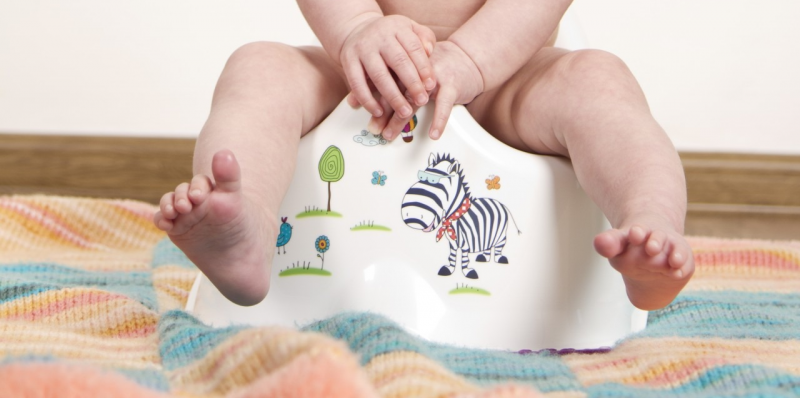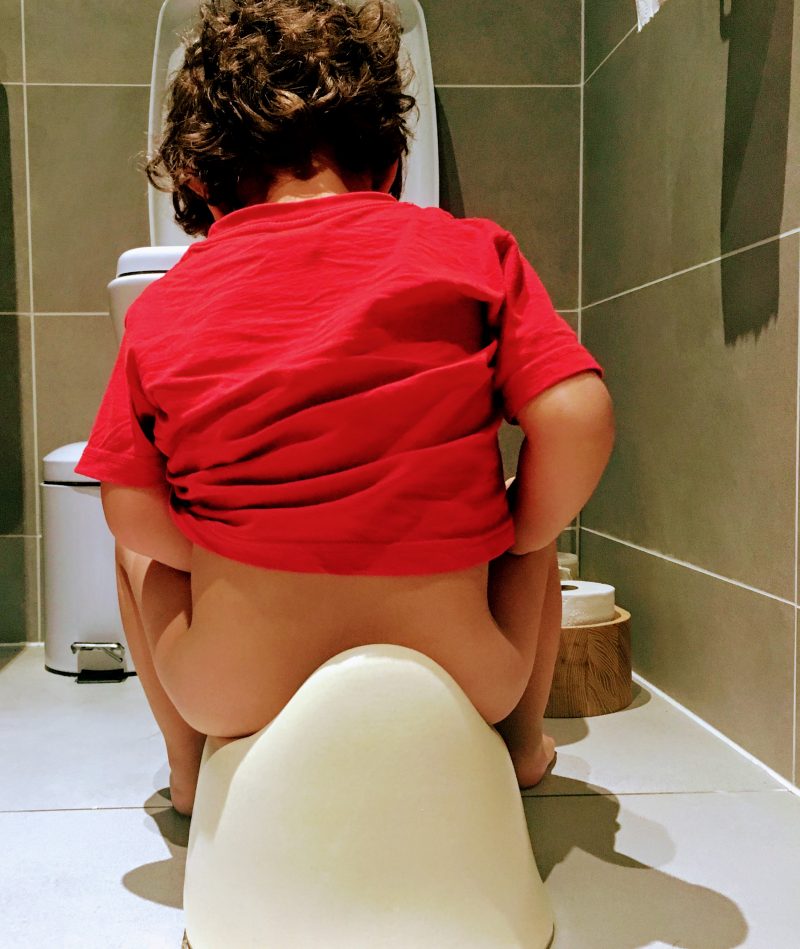 I didn’t want to make toilet training into a ‘big deal’, if that makes sense and I didn’t mind if he wasn’t the first in his class. We found it a generally pretty stress-free process that didn’t take one weekend or six months – it just happened gradually and easily over the course of a few months. I’ve scribbled down what we did below – or if video is more your thing, check this 6 minute video out I made on the topic. Otherwise, let’s go:
I didn’t want to make toilet training into a ‘big deal’, if that makes sense and I didn’t mind if he wasn’t the first in his class. We found it a generally pretty stress-free process that didn’t take one weekend or six months – it just happened gradually and easily over the course of a few months. I’ve scribbled down what we did below – or if video is more your thing, check this 6 minute video out I made on the topic. Otherwise, let’s go:
1.Wait for the right time – don’t rush it
As with crawling, walking, talking and in fact anything that can be classed as ‘developmental’, my mantra is always that there really is no rush. Age doesn’t matter. Yes, it’s kind of handy to have them out of nappies but your child is not going to be a teenager in nappies so don’t rush the process or push them in a direction you don’t feel they’re ready for – even if it feels everyone else’s child is long out of nappies (yours might be ‘faster’ at talking). I remember trying to potty train Jack when he was much younger around aged 2 and it just didn’t work – he would run out of the bathroom and had no interest at all.
2. Your time is the most important part, not the time of the year
Just like how old your child is, I don’t think it really matters if it’s Summer or not. People place a big emphasis on this but really what matters most is just letting your child spend a good deal of time with no nappy on – inside or out – and having flexibility to spend time focusing on it. More than the season, your time, is the important factor in making toilet training a success. Do you have mornings you can dedicate to sitting on the toilet with your child where you’re not needing to be somewhere? Where you know people aren’t necessarily going to be popping in? Where you can just hang out and focus on it?
3. Watch for the signals
I began to notice that Jack would always go off and want to be on his own when doing a number two. It was at this point that I would ‘intervene’ and attempt to gently take him to the potty! I’d had to keep a close eye out not to miss the moment when he needed it though.
4. Communication is key
Another helpful factor for us was Jack being able to properly talk and communicate. It meant he could tell me that he wanted to be on his own, and for the door to be shut, or that he wanted some books. It allowed him to tell me his preferred environment, which in the end was the key to his potty training.
5. Let them find their own weird method
I think it was my mum that came up with the phrase but Jack does what we call ‘knee knees’ which involves him basically kneeling up on the toilet seat, leaning one hand against the back of the toilet and peeing directly into the toilet. He does this by himself and although it’s kinda weird, it works. So don’t worry what ‘methodology’ you and your little one use – and experiment!

6. Keep it Simple
Toilet training seems to these days be associated with singing books and flashing toilet seats but I’m not convinced that it’s necessary and I’m also not someone who buys anything unnecessarily. I wouldn’t feel like you need to invest in the all the products surrounding toilet training – we used only one product, the BecoPotty
7. Find the fun
Bear with me on this one but in my opinion, toilets in themselves can be be kind of fun: what with tipping, flushing and hand washing (what about a fun soap bar ?), the process can actually be sort of entertaining. And let’s not forget all the songs, dances, imaginary characters you can make up.
8. Make the bathroom a happy place
Loooooong before I started really thinking that Jack was ready to use the toilet, we used to spend time together just sitting on the potty in the bathroom. After breakfast we’d go there, I’d pop him on the potty and we’d read books together. It was rare that he’d ‘perform’ but it got him relaxed and sitting on the potty and crucially, thinking that being on the potty was a fun place to be. Similarly if you little one has a certain favourite song or toy, think about leaving them in the toilet next to the potty to create a nice environment for them.
9. Leave them alone
Jack used to always go off and want to be left alone when doing a number two. If I’d approach him (as I knew he was doing it!), he’d get really upset and tell me to go away. When I thought about it, it was obvious he was looking for some privacy which is of course totally normal and what adults look for too (I always remember they compare being in labour to trying to do a poo – being alone is best and easiest) and wanted to be on his own. It made me think though that if I could create this environment but next to the potty, then maybe that might work so I took the simple step of asking Jack if he wanted to be left alone in the toilet to which he replied “yes, close the door please mummy.” That was a huge step to getting him trained. Now he’s always on his own and I leave him to it.
1o. Consider switching to cloth
If you’ve always been interested in cloth nappies but never quite got around to using them, potty training age is the perfect time to make the switch. It speeds up the process (your child feels when they are wet much more in a cloth nappy), you won’t have to dispose of half used nappies that have hardly been used plus you can save some pennies too.
11. Treat yourself
Potty training is all well and good, but no one tells you you have to actually then empty the potty out. Get yourself a yummy soap bar, mama – you definitely deserve it!
I hope the above few tips might help on your potty training journey. Your little one will get there before you know it, I assure you.
Emma xxx
P.S Overnight, he doesn’t wear a nappy but we do what we call “the lift” when we take him to pee basically in his sleep, at about 11pm or before whenever we go to sleep. He has no idea and so sweetly performs beautifully every time and this gets him through dry to the morning.
P.P.S Let’s Reframe Reflux and A New Chapter

